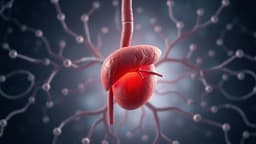Home / Health / Alcohol's Silent Attack: Liver Damage Explained
Alcohol's Silent Attack: Liver Damage Explained
22 Nov
Summary
- Alcohol metabolizes into acetaldehyde, a toxic compound damaging liver cells.
- Fatty liver is the first sign, progressing to inflammation and scarring.
- Ascites, or abdominal fluid buildup, signals advanced, urgent liver damage.

Chronic alcohol consumption initiates a damaging cycle within the liver. When alcohol is consumed, it is broken down into acetaldehyde, a toxic substance that directly harms liver cells. Continuous intake overwhelms the liver, leading to cellular damage, scarring, and eventual cell death. This progressive deterioration is a critical concern for long-term health.
The earliest indicator of alcohol-induced liver injury is the accumulation of fat, known as fatty liver. If alcohol consumption persists, this condition can escalate to inflammation, termed alcoholic hepatitis. Over time, this inflammation leads to the formation of scar tissue, resulting in cirrhosis, a state that severely impairs the liver's essential functions and is often irreversible.
In the advanced stages of liver damage, serious complications can arise, such as ascites, characterized by fluid accumulation in the abdomen. This occurs due to reduced blood flow to the liver and increased pressure in surrounding blood vessels, causing fluid leakage. Ascites signifies a critical condition demanding immediate medical attention.




